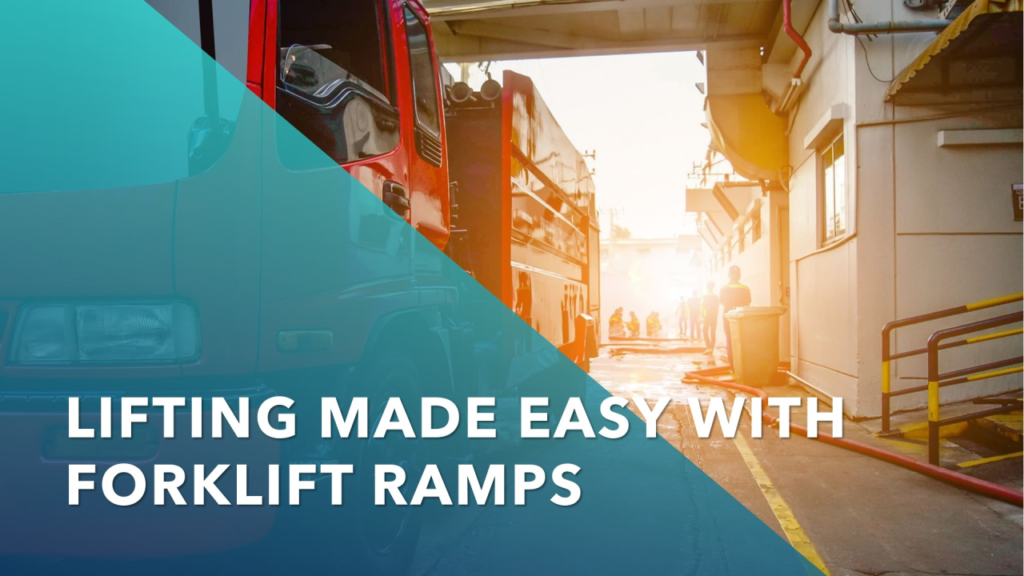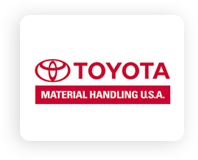In the dynamic world of material handling, forklift ramps play a crucial yet often overlooked role in ensuring the smooth flow of goods within warehouses and industrial settings. These essential structures enable forklifts to bridge gaps, access elevated surfaces, and transfer heavy loads effortlessly. This article explores the various aspects of forklift ramps, including their types, selection criteria, safety measures, maintenance practices, common applications, and the significant benefits they offer to businesses.
Understanding Forklift Ramps: Meeting Diverse Material Handling Needs
Forklift ramps are indispensable tools in material handling, available in various forms to meet specific operational requirements. Understanding the unique features and uses of these ramps is vital for businesses aiming to enhance their material handling processes and boost productivity.
Mobile Yard Ramps: Versatility for On-Demand Material Handling
Mobile yard ramps, exemplified by innovative designs from QMH Inc., are notable for their versatility and ease of relocation. These portable ramps can be moved as needed, making them ideal for businesses that unload trucks without permanent loading docks.
Key Advantages of Mobile Yard Ramps:
- Adaptability: Their mobility allows them to be positioned anywhere within the facility, catering to changing material handling needs.
- Cost-Effectiveness: They provide a budget-friendly alternative to permanent loading docks, suitable for businesses with limited financial resources.
- Ease of Use: Simple design and operation reduce the time and effort required for setup and takedown.
Dock Ramps: Essential in Warehouse Operations
Dock ramps are a staple in warehouses, serving as critical connectors between loading docks and trucks of varying heights. They facilitate a smooth and efficient flow of goods, minimizing downtime and maximizing productivity.
Benefits of Dock Ramps:
- Height Adjustment: Adjustable to match different truck heights, ensuring seamless transitions.
- Load Capacity: Designed to handle heavy loads, making them suitable for a wide range of goods.
- Durability: Made from robust materials for long-term use and cost-effectiveness.
Container Ramps: Specialized for Container Handling
Container ramps are designed to meet the specific demands of shipping containers, allowing for the efficient loading and unloading of cargo. These ramps are engineered to withstand the weight and challenges of containers, making them indispensable in logistics and transportation.
Advantages of Container Ramps:
- Strength and Durability: Built to support the heavy weight of shipping containers.
- Customized Designs: Can be tailored to fit various container types for maximum efficiency.
- Integration with Equipment: Designed to work seamlessly with container handling equipment like forklifts and reach stackers.
Choosing the Right Forklift Ramp: A Strategic Decision
Selecting the appropriate forklift ramp involves considering factors such as the type of material being handled, frequency of use, and available space. Businesses must evaluate their needs to make an informed decision.
- Mobile Yard Ramps: Offer flexibility and cost-effectiveness for changing material handling demands.
- Dock Ramps: Reliable for frequent truck loading and unloading in warehouses.
- Container Ramps: Specialized for container handling in logistics.
Factors to Consider When Choosing Forklift Ramps
Selecting the right forklift ramp is crucial for safety and efficiency:
- Load Capacity: Determine the maximum weight the ramp must support.
- Ramp Material and Durability: Opt for durable materials like steel and aluminum for longevity.
- Safety Features: Look for handrails, anti-slip surfaces, and wheel chocks to enhance safety.
Safety Precautions for Forklift Ramp Usage
Safety should always be a priority when using forklift ramps. Adhering to regulations and guidelines is essential:
- OSHA Regulations: Familiarize yourself with OSHA regulations for safe ramp usage.
- Operator Training: Ensure comprehensive training for forklift operators on ramp usage, load placement, and balance.
Ensuring Longevity and Performance: Installation and Maintenance
Proper installation and regular maintenance are vital to maximize the benefits of forklift ramps.
Proper Installation Procedures
- Site Preparation: Ensure the installation site is level and free of debris.
- Ramp Placement: Position ramps at an appropriate angle for safe transitions.
- Securing the Ramps: Firmly anchor ramps to prevent movement during use.
- Safety Signage: Display clear signs indicating maximum load capacity and safety precautions.
Routine Maintenance Practices
- Regular Cleaning: Keep ramps free of debris and spills to maintain traction.
- Thorough Inspections: Regularly check for wear, damage, or loose components.
- Preventive Maintenance: Lubricate moving parts and tighten bolts regularly.
- Prompt Repair: Address any damage or malfunctions promptly to ensure safety.
Common Applications of Forklift Ramps
Forklift ramps are versatile tools with numerous applications:
- Loading and Unloading Trucks: Facilitate easy loading and unloading, even without permanent docks.
- Accessing Elevated Surfaces: Provide access to mezzanines and platforms.
- Temporary Solutions: Ideal for facilities without permanent docks.
Harnessing the Benefits of Forklift Ramps
Forklift ramps offer numerous benefits, enhancing efficiency, cost savings, and versatility in material handling operations.
Enhanced Efficiency
Forklift ramps streamline material handling, reducing downtime and expediting operations. This results in faster order fulfillment and improved customer satisfaction.
Cost Savings
Efficiency gains lead to reduced labor costs and extended equipment lifespan, minimizing maintenance expenses and enhancing profitability.
Versatility
Forklift ramps adapt to various tasks, enabling businesses to handle diverse goods and respond to changing market demands.
Conclusion
Forklift ramps are essential tools in material handling, offering efficiency, safety, and adaptability in various industrial settings. Understanding their types, selection criteria, safety precautions, and maintenance practices is crucial for businesses aiming to optimize material handling processes while prioritizing worker safety. By embracing forklift ramps, companies can achieve greater efficiency and profitability in their operations.













